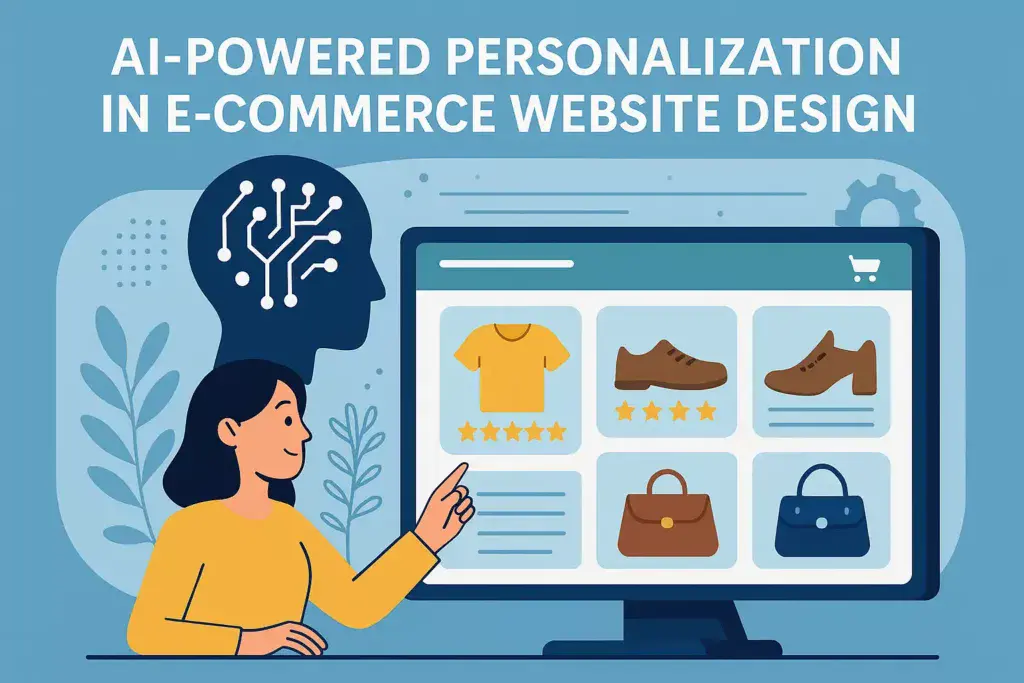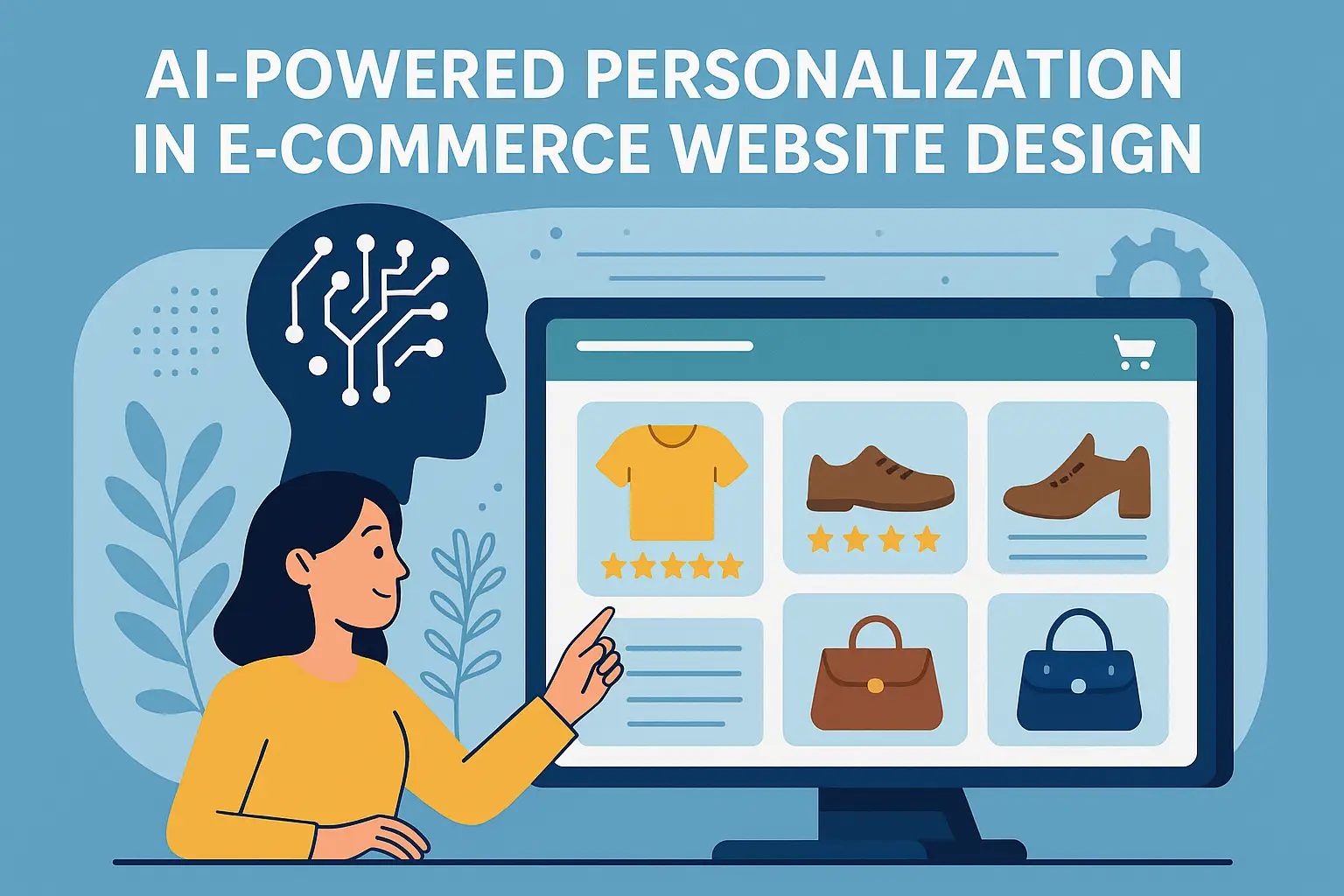
I. Introduction to AI-Powered Personalization in E-Commerce
In the rapidly evolving landscape of online shopping, AI-powered personalization in e-commerce has emerged as a transformative force, particularly in enhancing personalization. **AI** refers to the simulation of human intelligence in machines programmed to think and learn like humans. **Personalization**, in the context of e-commerce, involves tailoring the shopping experience to meet the individual needs and preferences of users. This can range from personalized product recommendations to customized marketing messages, all aimed at providing a more engaging and relevant shopping journey.
The importance of AI-powered personalization in e-commerce cannot be overstated. With an ever-increasing number of online retailers vying for consumer attention, businesses are compelled to differentiate themselves by offering unique, personalized experiences. Studies have shown that personalized shopping experiences can significantly boost customer satisfaction, increase conversion rates, and foster brand loyalty. In an environment where consumers are inundated with choices, the ability to present relevant products and content can make a substantial difference in a retailer’s success.
AI plays a pivotal role in facilitating this level of personalization, particularly in website design. By leveraging advanced algorithms and data analytics, e-commerce platforms can analyze vast amounts of customer data to deliver tailored experiences in real-time. This includes not only product recommendations based on previous purchases but also dynamic content that adapts to the user’s behavior as they navigate the site. The benefits of integrating AI into website design are manifold, including improved user engagement, higher sales, and a more streamlined shopping experience. As we delve deeper into the mechanisms of AI-powered personalization, it becomes clear that understanding and implementing AI-powered personalization in e-commerce is essential for businesses that want to thrive in today’s digital marketplace.
II. AI Algorithms for AI-Powered Personalization in E-Commerce
As e-commerce continues to evolve, the integration of AI has become pivotal in creating personalized experiences that drive customer engagement and conversion. This section explores the key AI algorithms that facilitate effective personalization on e-commerce websites.
A. Machine Learning Techniques Used in Personalization
Machine learning (ML) serves as the backbone of AI-driven personalization strategies. By analyzing vast amounts of data, these algorithms can identify patterns and trends that inform how content is presented to users. Common machine learning techniques include:
1. **Collaborative Filtering**: This method predicts user preferences based on the behavior of similar users. For example, if User A and User B have similar purchase histories, products favored by User B can be recommended to User A, enhancing the likelihood of conversion and demonstrating the impact of AI-powered personalization in e-commerce.
2. **Content-Based Filtering**: Unlike collaborative filtering, this approach tailors recommendations based on the attributes of the items a user has previously engaged with. For instance, if a customer frequently purchases sports equipment, the system may recommend similar products based on their descriptions and features.
3. **Reinforcement Learning**: This technique allows algorithms to learn and adapt over time based on user interactions. By rewarding the system for successful recommendations (e.g., when a user clicks on a suggested item), reinforcement learning continually refines the personalization process, eading to increasingly relevant suggestions in AI-powered personalization in e-commerce.
B. Natural Language Processing for Customer Interaction
Natural Language Processing (NLP) plays a crucial role in enhancing user interactions on e-commerce platforms. By enabling machines to understand and respond to human language, NLP can significantly improve personalization in the following ways:
1. **Chatbots and Virtual Assistants**: These AI-driven tools leverage NLP to engage customers in real-time conversations, answering queries and guiding them through the shopping process. By analyzing the language and sentiment of customer inquiries, chatbots can provide tailored product recommendations, enhancing the overall user experience.
2. **Sentiment Analysis**: By assessing customer reviews and feedback, NLP algorithms can gauge user sentiment toward specific products or brands. This insight can inform website design and marketing strategies, allowing businesses to highlight positively-reviewed items and address any concerns raised by customers.
3. **Personalized Content**: NLP can also be used to analyze search queries and browsing behavior, enabling websites to dynamically adjust content and product displays based on individual user preferences. For instance, if a user frequently searches for eco-friendly products, the website can prioritize these items in their recommendations.
C. Data Analytics for User Behavior Tracking
Data analytics is integral to understanding user behavior and optimizing personalization strategies. By tracking how users interact with an e-commerce site, businesses can gather valuable insights that inform AI algorithms:
1. **Behavioral Analytics**: This involves collecting data on user actions, such as page views, clicks, and purchase history. By analyzing this data, businesses can identify trends and patterns that reveal user preferences, allowing for more targeted marketing efforts and product recommendations.
2. **A/B Testing**: A/B testing enables e-commerce websites to experiment with different personalization strategies by presenting variations of a webpage to different user groups. By analyzing the performance of each version, businesses can determine which personalization features yield the highest engagement and conversions.
3. **Customer Segmentation**: Utilizing data analytics, businesses can segment their customer base into distinct groups based on demographics, behavior, and preferences. This segmentation allows for more tailored marketing campaigns and personalized experiences, ensuring that users receive content and recommendations relevant to their specific needs.
In summary, the application of machine learning techniques, natural language processing, and data analytics forms a robust framework for AI-powered personalization in e-commerce website design. By harnessing these algorithms, businesses can create more engaging and customized experiences that not only meet customer expectations but also drive loyalty and sales growth.
III. Implementation Strategies for AI-Powered Personalization in E-Commerce
As the digital landscape continues to evolve, the integration of AI-powered personalization into e-commerce website design has become vital for enhancing user experiences and driving sales. However, successful implementation requires a strategic approach to ensure that the AI tools and techniques align effectively with business goals and user needs. Here are key strategies for e-commerce websites to implement AI-powered personalization successfully.
A. Integrating AI Tools and Platforms
The first step in implementing AI-powered personalization is selecting the right tools and platforms that cater to the specific needs of the e-commerce site. Numerous AI-driven solutions are available, ranging from customer relationship management (CRM) systems with built-in AI capabilities to standalone personalization engines that leverage machine learning algorithms.
When choosing an AI platform, businesses should consider factors such as ease of integration with existing systems, scalability, and the range of personalization features offered. Additionally, partnering with established AI vendors or utilizing cloud-based AI services can facilitate a smoother integration process, allowing businesses to focus on customizing their user experiences rather than grappling with technical challenges.
B. Customizing User Experiences Based on AI Insights
Once AI tools are integrated, the next phase involves harnessing the insights generated by these systems to create tailored user experiences. This can include personalized product recommendations based on users’ browsing history, purchase patterns, and other behavioral data. Implementing dynamic content that adapts in real-time to user interactions can significantly enhance engagement and drive conversions.
For instance, e-commerce sites can utilize AI algorithms to serve personalized landing pages that showcase products aligned with individual preferences. Furthermore, personalized email marketing campaigns can be automated through AI, ensuring that customers receive relevant offers and content that resonate with their interests, thus fostering a deeper connection with the brand.
Personalized landing pages and email campaigns are among the most effective examples of AI-powered personalization in e-commerce.
C. Testing and Optimizing Personalization Features
To ensure that AI-powered personalization efforts yield positive results, continuous testing and optimization are essential. A/B testing can be employed to evaluate different personalization strategies and identify which variations resonate most with users. For example, businesses can test different formats of personalized recommendations or varying levels of content customization to determine what leads to better user engagement and conversion rates.
Additionally, leveraging analytics tools can help track the effectiveness of personalization features over time. By analyzing user feedback, behavior metrics, and conversion data, e-commerce sites can refine their strategies and make data-driven decisions to enhance the personalization experience continually. Regularly updating the AI models based on new data and changing user preferences will also ensure the personalization efforts remain relevant and impactful.
In conclusion, the implementation of AI-powered personalization in e-commerce websites is a multifaceted process that requires careful planning and execution. By integrating the right tools, customizing user experiences, and continually testing and optimizing features, e-commerce businesses can create a more engaging and personalized shopping experience that meets the evolving expectations of today’s consumers.
IV. Challenges and Ethical Considerations
As businesses implement AI-powered personalization in e-commerce, they must also address challenges and ethical concerns. While AI offers remarkable opportunities for enhancing user experiences, it also raises significant concerns that businesses must navigate carefully to maintain consumer trust and ensure equitable practices.
A. Data Privacy and Security Concerns
One of the foremost challenges in implementing AI-driven personalization is the handling of customer data. E-commerce websites collect vast amounts of personal information, including browsing history, purchase patterns, and demographic details, to tailor experiences effectively. However, the reliance on customer data to drive AI-powered personalization in e-commerce raises significant privacy risks.
Consumers are becoming increasingly aware of their digital footprints and demand transparency regarding how their data is collected, used, and stored. Moreover, the potential for data breaches heightens concerns about unauthorized access to sensitive information, which could lead to identity theft or other malicious activities. E-commerce businesses must prioritize robust data security measures and adhere to regulations such as the General Data Protection Regulation (GDPR) to protect user privacy and foster trust.
B. Avoiding Algorithmic Bias in Personalization
Another critical ethical consideration involves algorithmic bias, which can manifest in various forms during the personalization process. AI algorithms learn from historical data, and if that data reflects societal biases, the resulting recommendations can perpetuate stereotypes or exclude certain user groups. For example, if an e-commerce site primarily analyzes data from a specific demographic, it may inadvertently favor products or marketing strategies that cater exclusively to that group, alienating others. To combat this, businesses must ensure their data sets are diverse and representative, continually assess their algorithms for biases, and implement corrective measures when necessary. Striving for fairness in personalization not only enhances user satisfaction but also reinforces brand integrity.
C. Balancing Personalization with User Autonomy
While AI-driven personalization seeks to enhance user experiences by anticipating customer needs and preferences, it is essential to strike a balance between personalization and user autonomy. Over-personalization can lead to a phenomenon known as the “filter bubble,” where users are only exposed to information and products that align with their previous choices, limiting their exploration and discovery. This can create an echo chamber effect, stifling diversity in user experiences and potentially leading to consumer fatigue. E-commerce platforms should offer users control over their personalization settings, allowing them to adjust preferences and opt out of certain recommendations. By empowering consumers with choices, businesses can foster a more engaging and respectful relationship with their users.
In conclusion, while AI-powered personalization presents a wealth of opportunities to enhance e-commerce website design and user experiences, it is imperative to approach these advancements with a keen awareness of the associated challenges and ethical considerations. By prioritizing data privacy, addressing algorithmic bias, and respecting user autonomy, businesses can leverage AI technologies responsibly and effectively, ultimately leading to a more inclusive and satisfying shopping environment.
V. Conclusion
In summary, AI-powered personalization in e-commerce is a transformative force reshaping customer interactions.. By tailoring experiences to individual preferences, e-commerce platforms not only enhance user engagement but also drive higher conversion rates and customer loyalty. The integration of advanced AI algorithms allows for a deep understanding of consumer behavior, enabling businesses to craft personalized shopping experiences that resonate on a personal level.
Looking ahead, the future of AI in e-commerce design is poised for further innovation. As technology continues to evolve, we can expect even more sophisticated personalization strategies that leverage real-time data and predictive analytics. Emerging trends such as voice commerce, augmented reality, and hyper-personalized recommendations will likely redefine user experiences, making them more intuitive and immersive.
Ultimately, the goal of AI-powered personalization is to create seamless and meaningful interactions between brands and consumers. As e-commerce continues to grow and evolve, businesses that prioritize personalization through AI will not only enhance user experiences but also set themselves apart in a competitive marketplace. By embracing these advancements responsibly, companies can foster more engaging shopping experiences by embracing AI-powered personalization in e-commerce responsibly.
FAQs(Frequently Asked Questions)
Q1: What is AI-powered personalization in e-commerce?
A: It is the use of artificial intelligence to tailor shopping experiences in real time, from product recommendations to dynamic website design.
Q2: Why is AI-powered personalization in e-commerce important?
A: It enhances engagement, improves conversions, and builds brand loyalty by making shopping more relevant for each user.
Q3: How can businesses implement AI-powered personalization in e-commerce?
A: By integrating AI tools, analyzing customer behavior, and continuously testing personalized recommendations.


